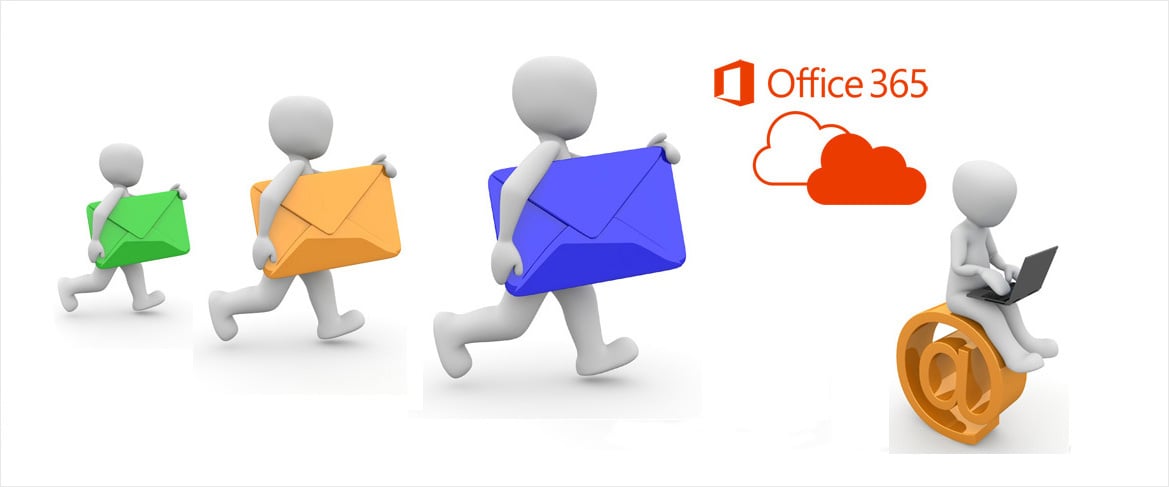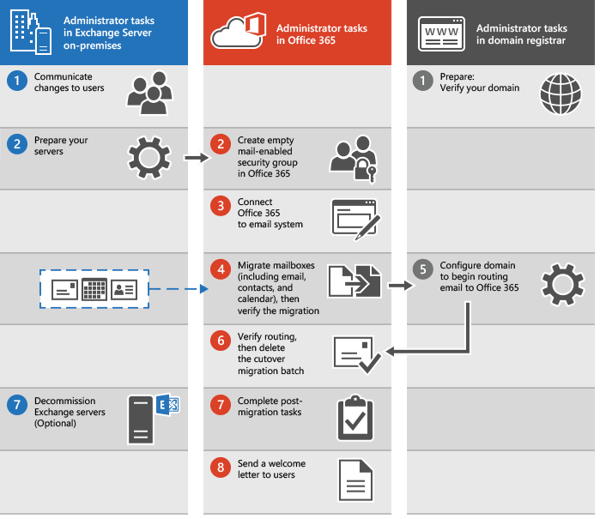 Many companies have used Microsoft Office, Outlook and other products for years without encountering the cloud. Your company may be sitting fine in your on-site server farm but there are some great advantages to migrating to Office 365. I know you hate Email issues and have learned probably the hard way not to touch email if you don't have to in order to avoid issues however Office 365 is easier than you think.
Many companies have used Microsoft Office, Outlook and other products for years without encountering the cloud. Your company may be sitting fine in your on-site server farm but there are some great advantages to migrating to Office 365. I know you hate Email issues and have learned probably the hard way not to touch email if you don't have to in order to avoid issues however Office 365 is easier than you think.
Reasons to migrate
- Sharepoint and OneDrive are included with every license. Most companies want to do more file sharing but don't have the SECURE tool to do it with. Rogue employees install free versions of DropBox and GoogleDrive without any thought of corporate security opening the network up to potential security nightmares. With Office 365 you can easily set up corporate Intranet sites, store and share docs in the cloud in a secure familiar environment.
- Updates are always a hassle when it comes to software. With Office 365 you will always be kept at the latest version of Outlook without fear of installing an update that blows up company email and it wont cost anything extra.
- Employees and Executives can work from anywhere, anytime.
- Security and Control will give you peace of mind.
- Maintenance free operation with less head aches.
- It empowers your aging infrastructure because you no longer have to replace expensive servers to support Outlook, Word, etc and it scales with your business easily as you grow.
- Lastly is availability and redundancy. This means that you are able to access all data on the cloud as you wish, bypassing delays from server mishaps, technical breakdowns or severe disasters (e.g. fires, power outage, extreme weather etc). Significantly decreasing the possibility of suffering catastrophic data loss to the point where any particular file or collection of files would not be able to be recovered.
Steps for migration
1. Where is your Data
First, you need to understand how your users are currently storing or accessing data. Things like...
- Locate Microsoft Tenant ID
- Users and groups
- Domain names
- Email -The primary domain name used for your on-premises Exchange organization must be an accepted as a domain owned by you in your Office 365 organization.
2. Set Expectations
- Clearly communicate security protocols, any access changes etc so your business can keep running smoothly during and after your migration.
- Administrators or users must configure desktop computers: Make sure that desktop computers are updated and set up for use with Office 365. These actions allow users to use local user credentials to sign in to Office 365 from desktop applications. Users with permission to install applications can update and set up their own desktops. Or updates can be installed for them.
3. Cutover Migration

Taking the time to plan for any technology migration is a crucial part of any successful deployment. We recommend working with one of our third-party partners such as Sherweb or Pax8 who have the tools and the experience to make this a smooth transition. You won't pay more for each license but you'll save time, money and hassle working with a provider who has done hundreds of similar migrations and has the process down. Remember, this is your migration; you set the timeline and the process that will make – or break – the transition.
To get a more detailed migration plan

To research more on your own download our free Ebook.

